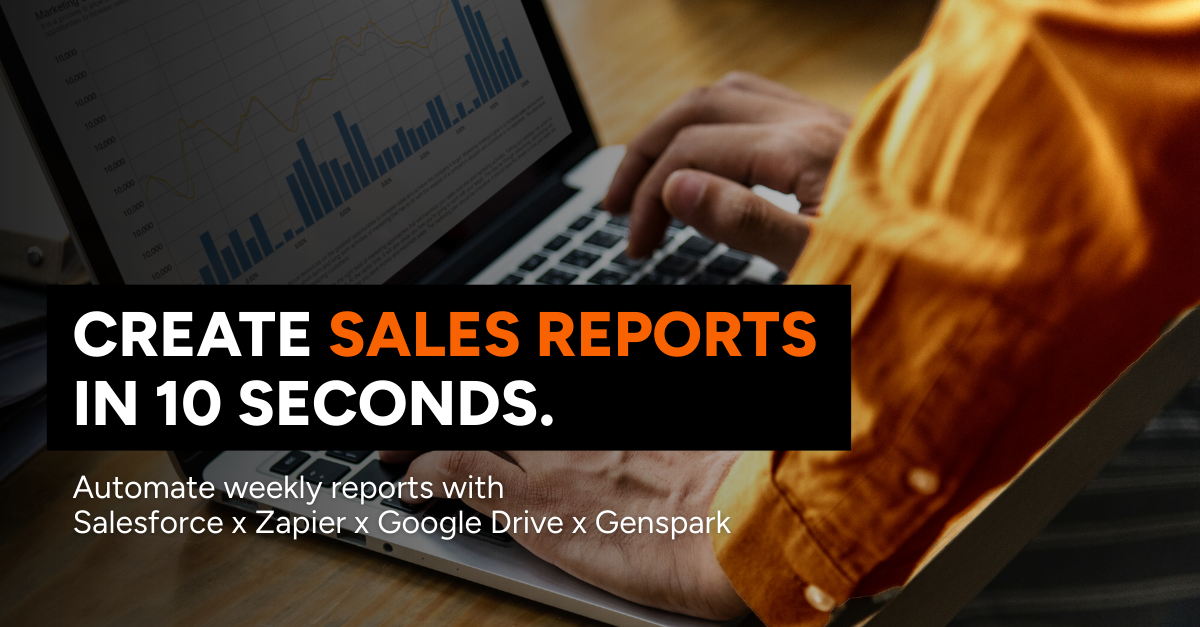What if your marketing campaigns could learn, adapt, and respond without manual input? With Agentic AI, this is now a reality as autonomous agents can make intelligent decisions and act across the entire B2B buyer journey. As marketers look to scale personalisation, speed up lead conversion and simplify operations, agentic AI offers an exciting new frontier.
In this article, you will learn:
- What agentic AI is and how it differs from traditional automation
- How agentic AI is transforming B2B marketing
- Use cases including lead nurturing, journey orchestration, and real-time personalisation
- Real-world examples of agentic AI in action
- Why it matters for your ABM strategy
- How to integrate agentic AI into your B2B marketing framework
What Is Agentic AI?

Agentic AI refers to a new generation of artificial intelligence systems designed to function with a high degree of autonomy. Unlike traditional marketing automation tools, which rely on fixed rule-based triggers or pre-set workflows, agentic AI systems are capable of sensing their environment, reasoning through complex scenarios, planning appropriate actions and executing those actions independently – all without continuous human input.
In the context of B2B marketing, this means AI agents can now take on tasks that once required multiple human touchpoints. For example, instead of waiting for a marketer to manually segment leads or send follow-up emails, an AI agent can evaluate customer data in real time, anticipate what a buyer is likely to do next, and respond with relevant content or actions automatically. These agents don’t just follow instructions – they learn from data patterns, predict future behaviour and adjust their decisions based on what is or isn’t working.
The implications are significant. What we’re seeing is a shift from static marketing automation to intelligent, evolving engagement systems. According to IDC, agentic AI is already being trialled in roles that previously required entire marketing teams. This includes lead nurturing, campaign optimisation, and journey orchestration – but now with faster reactions, less manual oversight and continuous improvement built in.
In essence, agentic AI bridges the long-standing gap between intelligence and execution. It allows marketers to concentrate on high-level strategy, brand storytelling and customer empathy while the AI takes care of the operational “how.”
The result is a self-optimising marketing engine that scales with your business, personalises at the individual level, and continuously learns to deliver better outcomes.
How Is Agentic AI Used in B2B Marketing?

Agentic AI is not a concept for the distant future – it’s already reshaping how businesses engage with prospects and customers across the entire B2B marketing funnel. Below, we explore three high-impact use cases where agentic AI is creating value through automation, personalisation and scale.
1. Automated Lead Nurturing: AI-Powered Conversations That Convert
Lead nurturing has traditionally been labour-intensive, requiring marketers to segment databases, write multiple follow-up emails and manually qualify interest. It’s also reactive – often dependent on set rules and delayed responses. Agentic AI changes that by enabling always-on, self-directed nurturing based on live signals.
When a new lead enters your CRM whether through a demo request, whitepaper download, or webinar registration, an AI agent gets to work instantly. It cross-references firmographic data (such as company size, industry, and location) and behavioural signals (like previous website visits or email opens). Based on this analysis, it sends a tailored follow-up message that fits the lead’s context such as a relevant case study or an explainer video.
If the lead clicks through and engages further, the AI agent refines its approach. It may follow up with a more specific piece of content, such as a pricing guide or an ROI calculator. When the lead reaches a defined threshold of readiness – for example, multiple visits to the pricing page or interaction with product documentation – the AI seamlessly books a meeting with your sales team.
This isn’t theoretical. AI-powered tools like ChatSpot and Regie.ai are already doing this in real B2B environments. Acting like junior Sales Development Representatives (SDRs), they handle the time-consuming early stages of prospect engagement, freeing up your human team to focus on high-value conversations and conversions.
2. Journey Orchestration at Scale: Managing Complexity Without Manual Input
The modern B2B buyer journey is anything but linear. Prospects engage with brands across channels – attending virtual events, reading blog content, subscribing to newsletters, downloading guides, ignoring sales emails and then revisiting pricing pages. Mapping and responding to all these signals manually is overwhelming, even with traditional automation.
Agentic AI brings clarity to this chaos. It tracks individual behaviour across every touchpoint, then autonomously decides on the next best action. Suppose a lead attends your product webinar but doesn’t respond to your follow-up email. Instead of ending the trail there, the AI agent might wait 48 hours and then deliver a new piece of content, such as a customer success story tailored to their industry.
If the prospect then clicks on the success story and subsequently lands on your pricing page, the AI notifies the sales rep in real time. The result? Your team enters the conversation at just the right moment – when interest is peaking, and intent is clear.
This level of dynamic decision-making allows marketers to keep pace with each individual buyer’s journey. According to Salesforce, companies that personalise their engagement across multiple stages of the buyer journey could experience 30% faster sales cycles and higher close rates. Agentic AI makes that kind of personalisation practical, scalable and sustainable.
3. Real-Time Personalisation: Turning Browsers Into Buyers
Today’s B2B buyers expect experiences that mirror the personalisation they enjoy in their consumer lives. Static websites and generic messaging no longer inspire action. Agentic AI takes personalisation beyond segmentation, enabling hyper-relevant experiences in real time.
Imagine a decision-maker from a target account – say, a healthcare company, is visiting your website. An AI agent immediately recognises the visitor’s IP address or login credentials. It then pulls from your CRM or intent data to determine the account’s industry, location, size, and where they are in the buyer journey.
Within seconds, your site dynamically adapts to the visitor’s profile by:
- Displaying a homepage headline tailored to the healthcare industry
- Highlighting a case study featuring a healthcare client
- Updating the CTA with a sector-specific guide download
- Launching a chatbot with a personalised message: “Hi Alex, have questions about our solutions for healthcare compliance?”
All of this happens without a human triggering the experience. Behind the scenes, tools like Mutiny, 6sense, and Clearbit enable this level of precision by combining real-time data with agentic decision-making. This means your website no longer serves everyone the same experience – it speaks directly to the needs of each visitor.
This matters more than ever. Adobe’s 2023 Digital Trends Report states 89% of B2B buyers expect tailored digital experiences that are relevant to their company and industry. With agentic AI, we can now deliver that expectation as a standard – not a bonus.
How Does Agentic AI Help Account-Based Marketing (ABM)?

Account-Based Marketing (ABM) is all about quality over quantity. It focuses on building meaningful, personalised engagement with high-value accounts rather than casting a wide net. To do this well, marketers need to deeply understand each target account’s needs, tailor messages accordingly and maintain consistent, context-aware communication across multiple touchpoints. While incredibly effective, this level of precision has traditionally required significant time, effort and resources.
Agentic AI helps solve this resource challenge. By taking on repetitive, data-driven tasks, it enables your marketing team to focus on creativity and strategy while the AI handles operational execution. Rather than simply automating a task, agentic AI can sense, decide, and act based on real-time data — making it a perfect ally for ABM.
Here’s how it supports key elements of your ABM strategy:
- Continuous Account Monitoring: Agentic AI can monitor engagement levels across your priority accounts. It tracks visits to your website, interactions with emails, webinar registrations, social media mentions and more – surfacing accounts that are warming up or beginning to show intent.
- Real-Time Personalisation at Scale: Whether it’s changing a landing page’s messaging to match the account’s industry or delivering tailored ad content across platforms, agentic AI enables real-time content adaptation. This allows each account to receive a personalised experience without requiring manual updates.
- Behaviour-Based Outreach Triggers: If a prospect from a target account clicks on a pricing link, downloads a whitepaper, or watches a product demo video, the AI can instantly trigger the next best action. This might be an email, a chatbot conversation, or a prompt to the sales team to reach out.
- Campaign Sequence Optimisation: ABM isn’t just about what you say – it’s about when and how often you say it. Agentic AI can test, analyse, and adjust campaign sequences on a per-account basis, ensuring optimal timing and frequency without manual recalibration.
This dynamic, adaptive approach ensures your ABM strategy never goes stale. Instead of static account plans that need constant human input, you get fluid engagement flows that evolve with the account’s behaviour and needs.
Most importantly, agentic AI enables scale without sacrificing relevance. This solves a key challenge for B2B marketers as they are able to grow their ABM programmes without losing the personalised touch that makes them effective. With agentic AI as part of your toolkit, you no longer have to choose between scale and precision – you get both.
How Agentic AI Works in the Real World

Agentic AI is already reshaping how B2B marketers engage with prospects and accounts. From intelligent chatbots to dynamic content curation, organisations across industries are seeing measurable improvements in speed, relevance, and efficiency.
Take Drift, for example. Their AI-powered chatbots have evolved into digital concierges that manage website interactions autonomously. These bots welcome visitors, qualify them based on predefined criteria, and route high-intent leads to the right sales representatives – all without human intervention. This level of autonomy ensures prospects receive timely, accurate responses, improving both engagement and conversion rates.
PathFactory takes a different approach by using agentic AI to create personalised content journeys. As users navigate through content, the system observes their behaviour and dynamically curates what they see next. If a buyer spends more time on product pages than thought leadership content, the AI adjusts the sequence to prioritise case studies and demos. This adaptive experience respects the buyer’s pace and preferences, making content feel more like a conversation than a campaign.
Salesforce Einstein also illustrates the power of agentic AI at scale. It analyses interactions across email, CRM and website data to recommend next-best actions for marketing and sales teams. What’s remarkable is that many of these actions are not just suggested – they’re automatically initiated. From sending follow-up emails to updating lead scores, Einstein removes the bottlenecks that often delay engagement.
Recent pilot programmes within the B2B industry show how agentic AI can boost email personalisation effectiveness. For instance, Gumtree, a leading UK classifieds platform, achieved an increase of at least 35% in email open rates by utilising AI to A/B test subject lines, thereby enhancing the relevance, personalisation and engagement of their email campaigns.
These AI agents don’t just personalise content; they also determine the optimal time to send messages based on each recipient’s engagement history and time zone. The result is a more human-like communication experience, delivered at scale. Not only that, data has shown that AI-powered personalisation can increase conversions by up to 30%.
By taking on repetitive tasks and making data-informed decisions in real time, AI agents make it possible for human marketers to focus their efforts on strategy, creativity and relationship-building.
Now That You’ve Learned About Agentic AI, Here’s How To Integrate It Into Your Strategy

Not every business needs full autonomy on day one. Start small, then scale.
- Audit Your Workflows: Identify where decisions are rule-based and repetitive. These are ideal for agentic AI.
- Connect Data Silos: Ensure your CRM, web analytics and marketing tools are integrated. Agentic AI relies on clean, accessible data.
- Test Pilot Projects: Start with lead scoring or personalised emails. Tools like Apollo, ChatGPT with plug-ins and HubSpot AI can help.
- Train and Monitor: Even autonomous agents need oversight. Monitor their performance, refine the logic and train models with updated data.
- Iterate and Expand: Once confident, expand AI agents to work across more touchpoints such as events, social media, customer service and more.
Ready For Agentic AI to Supercharge Your B2B Marketing?

Agentic AI isn’t just another tool – it’s an evolution in how we approach marketing, ultimately empowering marketers to:
- Nurture leads more efficiently
- Orchestrate buyer journeys at scale
- Personalise content in real time
In Asia Pacific and beyond, ABM is becoming the standard. Buyers expect high-touch, high-relevance interactions. With agentic AI, we finally have a way to meet these expectations without burning out our teams.
At Clickr, we’re aware of how crucial agentic AI is in today’s fast-changing B2B landscape. Together, let’s explore ways to transform your marketing strategies into measurable results and lasting success.


